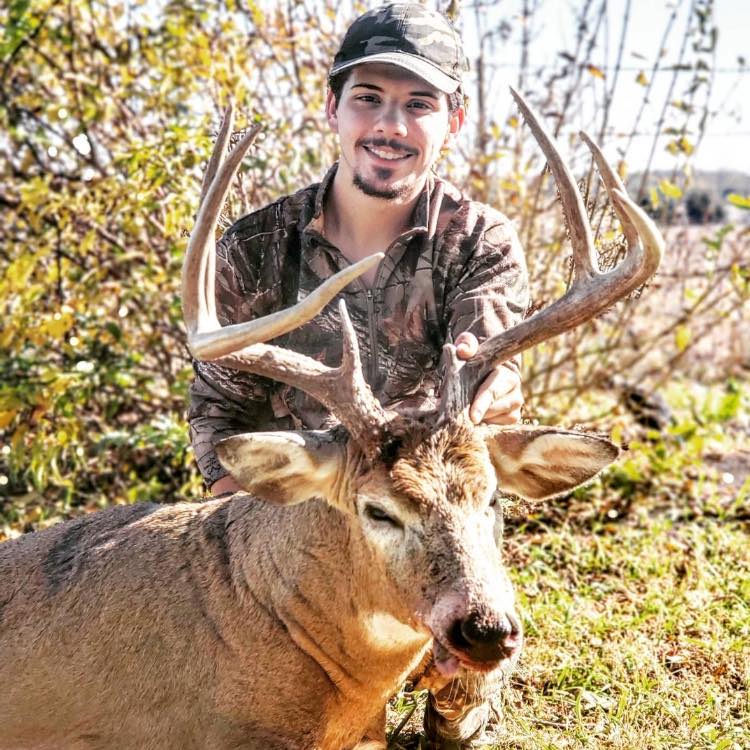The one thing that we all pay close attention to as the deer season draws near is the weather. Changes in weather patterns can make or break your hunting season. We all pay attention to the rain and wind, but how many pay attention to the barometric pressure.
Few, I presume, given that unlike wind and rain you can neither feel nor see barometric pressure. But the latter is one of the weather factors that greatly impact deer movements. Understanding the relationship between barometric pressure and deer hunting is therefore crucial.
Though it is impossible to measure barometric pressure without an instrument, the rise and fall of barometric pressure bring with it changes in weather. Also known as atmospheric pressure, a fall in barometric pressure is normally characterized by precipitation. As the pressure decreases the conditions turn to windy and rainy. This means that during heavy storms the pressure is usually very low.

Contrastingly, when the weather calms down the atmospheric pressure starts to rise. The pressure is usually highest when clear skies become visible again. When measuring the pressure using a good barometer on a clear sunny day the readings will be from 31 and above. On stormy days the readings will be from 29 and below.
How Barometric Pressure Affects Deer Movement
Needless to say, changes in atmospheric pressure greatly affects deer movement. And knowing how barometric pressure affects deer movement will be key to the success of your deer hunt with rifle or crossbows.
Generally speaking, deer tend to be less active when the atmospheric pressure is lowest. This means that if the pressure drops to below 29, deer movement will be minimal.
On the flip side, deer tend to be more active when the pressure is highest. This means that if the pressure is anywhere above 30, then deer movement will be normal.
To gauge changes in atmospheric pressure, you require a barometer or to rely on the internet. Unlike you and I, deer rely only on their natural senses. In this regard, deer are able to sense changes in barometric pressure without requiring the aid of an instrument.
According to studies done on how barometric pressure affects deer movement, deer are most comfortable with a pressure of between 30.0 and 30.4.
It has also been found that both bucks and does are more likely to be found in such atmospheric pressure. The ratio of bucks to does is usually 1:1 when the pressure is above 30.
This ratio drops to 3:1. This means if you are out for a trophy buck you are unlikely to find one when the pressure is low. This is how barometric pressure and deer hunting relate.

Deer Hunting In High Winds

Given that in times of low atmospheric pressure, it’s usually windy, hunting on a windy day must be a bad idea, right? Well, contrary to popular belief wind has a very minimal effect on deer movement.
Over the last 15 years or so a lot of research and experiments on the topic of deer movements in high winds have been conducted.
Surprisingly most of these researches have revealed that deer do in fact move in windy weather. The deer movement chart from these studies shown that deer are more active on windy days than on windy nights. So, if you thought deer hunting in high winds is a waste of time, think again.
How To Detect Changes In Atmospheric Pressure
Knowing the best barometric pressure for deer hunting is nice, but this information will be useless unless you know how to use it. In other words, you need to be able to know when the barometric pressure changes. Thankfully, technology offers us with a number of tools that help us detect changes in atmospheric pressure.
To know when the pressure drops or rises you can opt for the more traditional approach of using barometric pressure. However, given that not many of us have access to these instruments using the internet is the next best thing. There are many mobile apps that you can use to keep abreast with changes in atmospheric pressure.
Barometric Pressure Hunting App
A barometric pressure hunting app will keep you updated on changes in weather conditions. Personally, I use the ScoutLook Hunting app. The latter gives me detailed reports on important weather conditions including atmospheric pressure. Of course, this is my preferred app, but you can use any of the many other apps available. Most of these apps are free to download, but there are some that come with premium subscription services.
Sypressure Barometer is another barometric pressure hunting app that you might find useful. This app showed you both current and predicted future atmospheric pressure as well. This is useful as you can prepare yourself accordingly.
Do Deer Move When The Barometric Pressure Rises
Do deer move when the barometric pressure rises? This is a question you have probably asked yourself.
Well, changes in atmospheric pressure can be a sign that it’s time to go for a hunt. Studies indicate that deer tend to be more active immediately after a storm. Also, while hunting on windy days is not bad, hunting after the wind might also bring you luck. Deer have been known to be active after sustained high winds of about 30Mph and above. These changes in weather are indicative of either a fall or rise in atmospheric pressure. When the storm is clearing the atmospheric pressure is rising. Thus, this is the best time to go out hunting.
Conclusion
Finding out what is the best barometric pressure for deer hunting is important. But equally important is knowing when atmospheric pressure changes. Having an app on your phone will help you understand of these changes. When it comes to barometric pressure and deer hunting having all the relevant information easily accessible will be vital. Especially since weather patterns are so unpredictable nowadays than before. However, it should be remembered that barometric pressure is just one of the many weather factors that affect deer movements. Keeping an eye on the other factors such as wind and rain is also important. These factors do go hand in hand though.

About The Author:
Lake Streeter, A Gun enthusiast, and loves to hunt in the middle of the wood. Always check the latest hunting gears out in the market and try to share his honest opinion with the audience in Hunting Nook.
